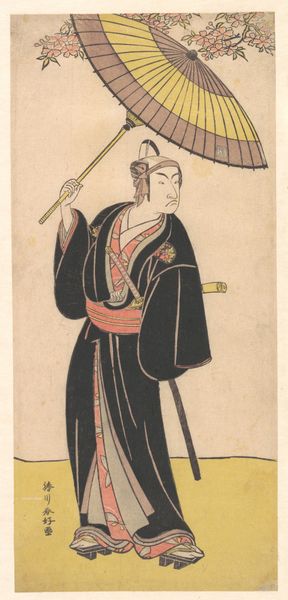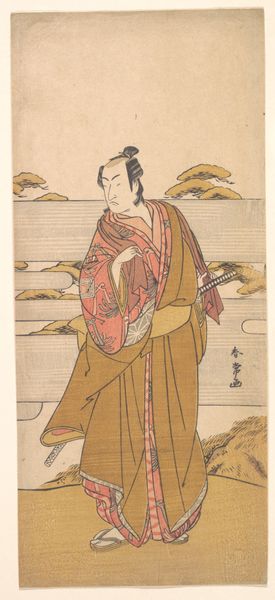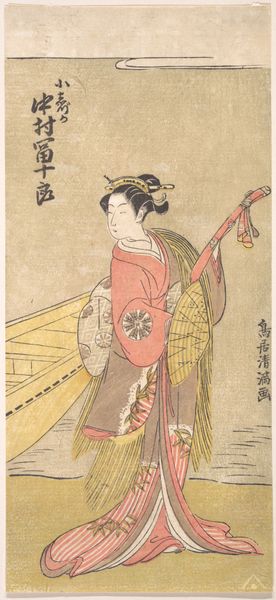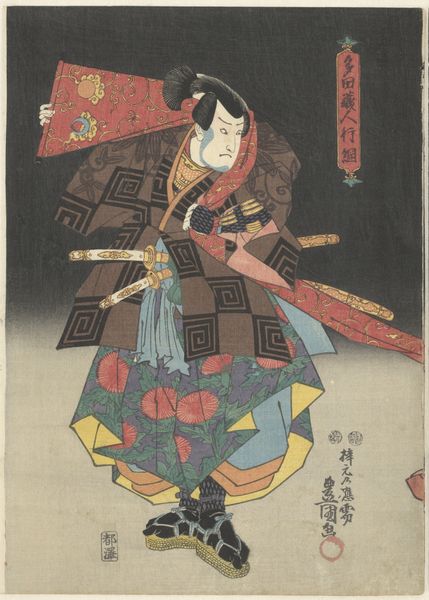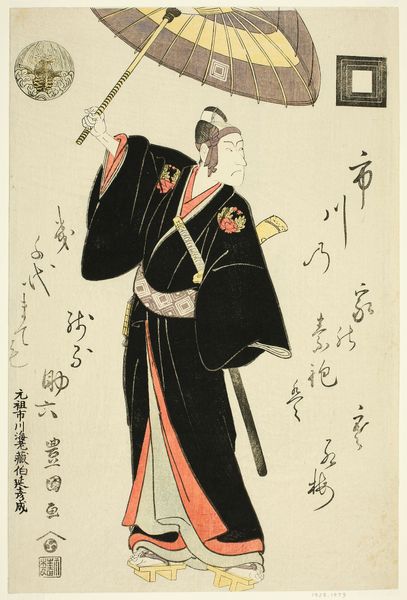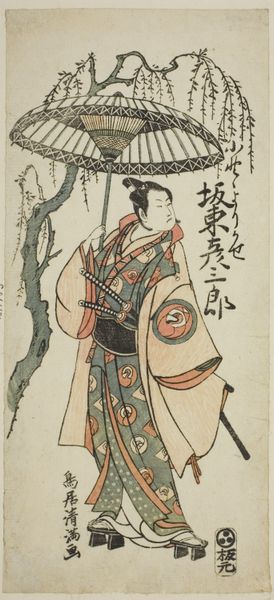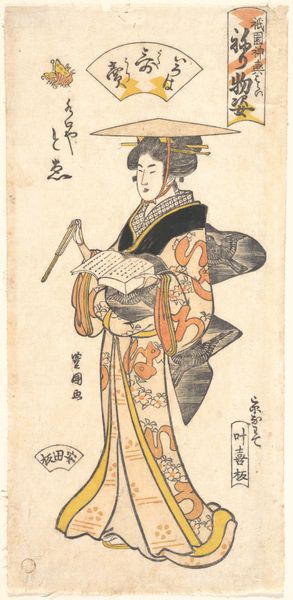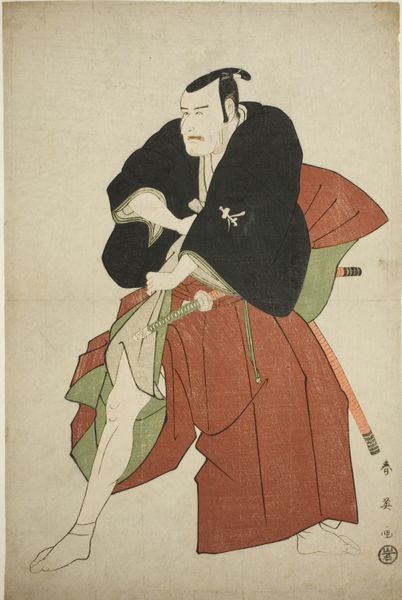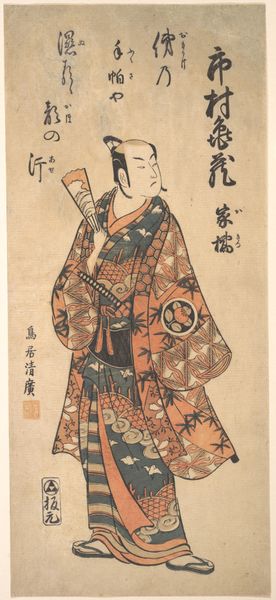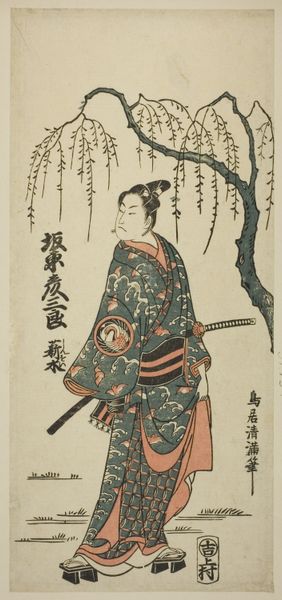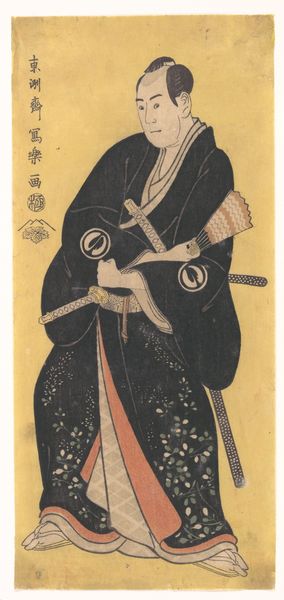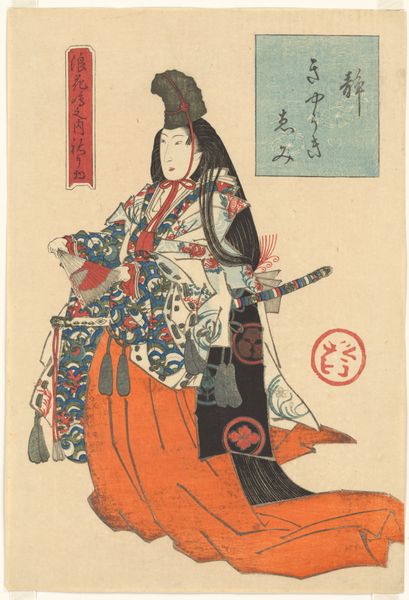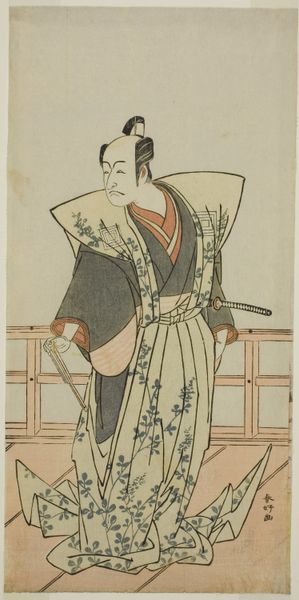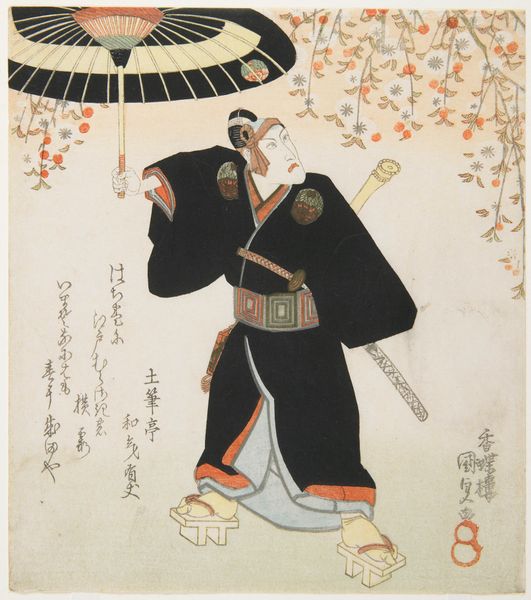
print, ink
#
portrait
# print
#
asian-art
#
ukiyo-e
#
figuration
#
ink
Dimensions: 14 9/16 × 9 13/16 in. (37 × 25 cm) (image, vertical ōban)
Copyright: Public Domain
Editor: This woodblock print, called "Ōtsu," possibly made between 1855 and 1858 by Utagawa Kunisada, has such a theatrical feel. The figure's stern expression and formal garb give him a larger-than-life quality. How do you interpret this work within its cultural context? Curator: That’s a great observation. Utagawa Kunisada was a leading designer of ukiyo-e woodblock prints in the late Edo period. We must remember ukiyo-e were immensely popular with the merchant class. These prints often depicted kabuki actors, courtesans, and scenes from daily life. Given that this work features a figure against a backdrop resembling a stage set, do you think it reflects an interest in the performing arts? And what could it mean about the cultural values or interests of its original audience? Editor: That makes sense. It's fascinating how the print medium made art accessible to a wider audience, not just the elite. Could this be read as an early form of celebrity culture? The details, like the placement of text and emblems, what was their intent and role? Curator: Absolutely, the depiction of recognizable figures tapped into a growing celebrity culture. The placement of text and emblems serve as both signature and identifier, like our magazines today. Moreover, it might elevate this specific actor, making him a figure worthy of respect and memorialization. Editor: So, a cultural artifact and a kind of proto-pop-art portrait all in one? I hadn't thought of it that way. It really reveals the societal impact an artwork can carry! Curator: Precisely! Seeing art within its historical framework illuminates the artist's choices and helps us understand the dialogue the piece has with its society.
Comments
No comments
Be the first to comment and join the conversation on the ultimate creative platform.
